When one thinks of Alfred Hitchcock films, the preface “Based on a true story” doesn’t usually jump to mind. Yet that’s exactly what ‘The Wrong Man’ is. Adapted from a real life case of mistaken identity, the movie reportedly stays remarkably close to the actual events that inspired it. In many ways unique among the director’s vast canon of spine-tingling thrillers, the film retains a rare sense of realism for the Master of Suspense, which results in a picture that’s both atypically and classically Hitchcock.
The story follows a kindhearted musician, Manny Balestrero (Henry Fonda), as he struggles to make ends meet and support his family. A bit strapped for cash, Manny decides to go down to the insurance office to borrow money off his wife’s policy. Unfortunately, the tellers at the office mistake Manny for a man who recently robbed the place. From there, the situation quickly escalates. Before long, Manny is questioned by the police for a string of thefts all around town. When he’s eventually arrested for the crimes, Balestrero and his wife (Vera Miles) form a defense to prove his innocence, but stroke after stroke of bad luck might simply be too much for the family to bear.
Throughout the first half of the film, Manny is repeatedly told by the police that, “An innocent man has nothing to fear,” and the poor father of two acts accordingly, letting the process run its natural course without putting up much of a fight. Unfortunately, as we come to see, that old “innocent man” adage proves to be rather laughable. Things simply get out of hand, and the manner in which the situation gradually spirals out of control is masterfully paced. Suspicion leads to panic, and suddenly heavy emotions compromise the initial accusers’ judgment. Coupled with an almost unbelievable string of unlucky coincidences, Manny goes from interrogation to lineup to booking to being locked up so fast that it’s downright infuriating – and all the while, he never even gets to call his wife. This is the type of the film that makes you palpably frustrated as you watch (in a good way), because you know that if everyone just took a second to calm down and clear their heads, the crisis could be averted.
Despite being based on fact, the narrative is right up Hitchcock’s alley and plays with a lot of the same themes that the director was frequently drawn to. With that said, the winding plot lines and sensational twists that mark some of his other works are mostly absent. Instead, Hitchcock chooses to stay as close to the truth as possible. While the real life story is quite dramatic in its own right, some may be taken aback by this more personal, modest approach. Thankfully, both Henry Fonda and Vera Miles are more than up for the character-heavy focus, and the couples’ tragic plight is realized beautifully by their strong performances.
Going along with the script’s emphasis on reality is Hitchcock’s reserved visual style. In sharp contrast to several of his other pictures, ‘The Wrong Man’ features a comparatively stripped-down aesthetic. Indeed, there are stretches of the run time where the director’s trademark touch is all but invisible, and he lets the facts and emotions of the story speak for themselves. Of course, this isn’t always the case, and Hitchcock frequently makes his presence known in more subtle ways, such as allowing push-ins, tracking shots and sound design choices to gently bolster the tension and subtext of his scenes. One whirling camera movement that rotates around Fonda’s character like a wobbly clock (which visually mirrors his own spiraling situation) is particularly memorable, and marks one of the film’s few truly overt shots. While not quite documentary style, this visual restraint lends the picture a certain sense of reality that is uncharacteristic of the director’s more visually and dramatically heightened efforts.
‘The Wrong Man’ offers an interesting viewing experience, especially if one is familiar with Hitchcock’s usual style. The manner in which the director adapts his trademark sensibilities into a more realistic “true story” approach is quite fascinating. Though the film is home to many elements that absolutely scream Hitchcock’s name, its focus is much more intimate and internal than one might expect. The movie isn’t perfect (an abrupt title card wrap-up in the final scene is jarring), and it might not be as well known or celebrated as the director’s most famous works, but it’s still a very worthy and distinctly unique entry in his storied filmography. Hitchcock fans looking for something a little different from the filmmaker should definitely seek it out.
Unfortunately, no Blu-ray version of ‘The Wrong Man’ is scheduled at the moment, but Warner’s current DVD release (which I viewed for this article) is a solid disc. The source print is in nice shape and the transfer itself is pretty good by DVD standards.
—
In association with the National Film Preservation Foundation, High-Def Digest is proud to join the 2012 Hitchcock Blogathon. During the week of May 14th to 18th, we will blog about topics related to the films and career of the legendary Sir Alfred Hitchcock. This year, the NFPF hopes to raise money to fund a new musical score and online streaming distribution for ‘The White Shadow’, an early silent film that young Mr. Hitchcock (then officially a writer and Assistant Director) used as a stepping stone to launch his own directorial career. To contribute, please visit the NFPF’s donations page.
For additional information, also see the NFPF web site page or the Self-Styled Siren, Ferdy on Films and This Island Rod blogs.

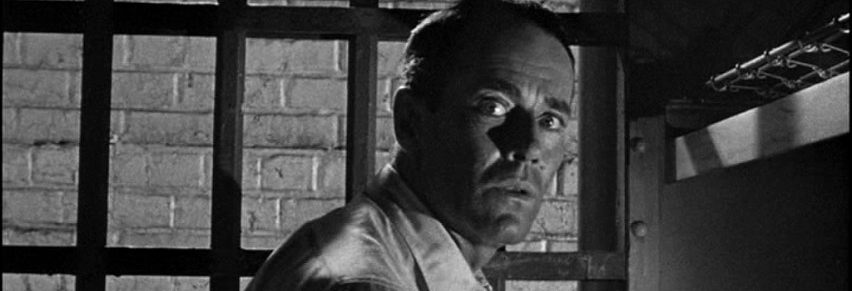

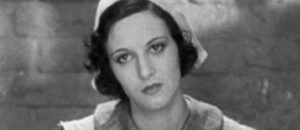
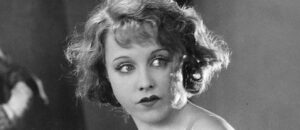
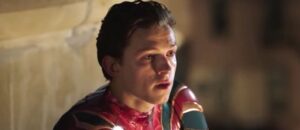
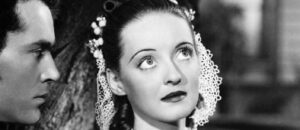
Grand Old Movies
What’s interesting about The Wrong Man is that, like the 1936 Sabotage, it’s one of his few films that deal with working-class characters, who live in modest surroundings and have actual jobs (as opposed to more glamorous characters and setting in such films as Notorious or To Catch a Thief or Marnie). Depicting ‘how the other half lives’ perhaps also influenced his more quiet, stripped-down style; but he’s still able to work in incredible intensity into the plot. One thing about The Wrong Man is Hitchcock’s use of editing: the slow dissolve from Fonda’s face to that of the real thief. I don’t recall seeing that technique used in other Hitchcock films (where he tends to use either rapid cutting or a circulating or panning camera) in telling his story.